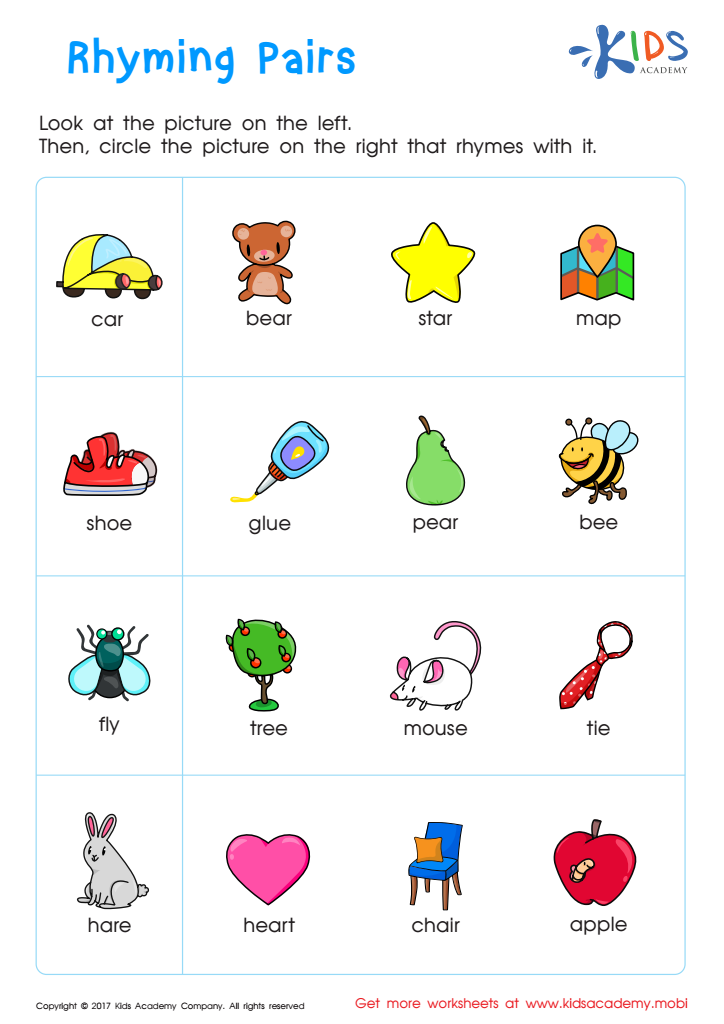Vocabulary enhancement Normal Rhyming Worksheets for Ages 3-8
8 filtered results
-
From - To
Welcome to our Vocabulary Enhancement Normal Rhyming Worksheets, designed specifically for ages 3-8! These engaging worksheets promote language development while making learning fun. Through interactive activities, children will discover delightful rhymes that expand their vocabulary and strengthen their phonetic awareness. Each worksheet is crafted to enhance listening and speaking skills while fostering a love for words. Perfect for home or classroom use, our resources encourage little learners to explore sounds and word patterns in an enjoyable way. Join us in sparking curiosity and creativity in young minds with our vibrant and educational rhyming worksheets!
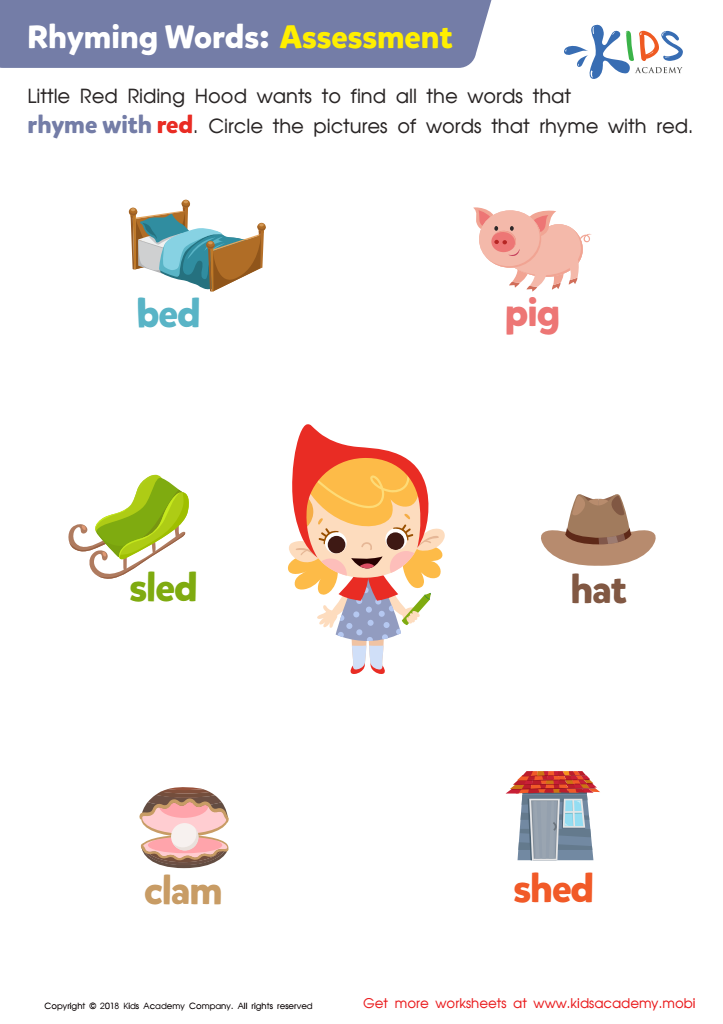

Rhyming Words: Assessment Worksheet
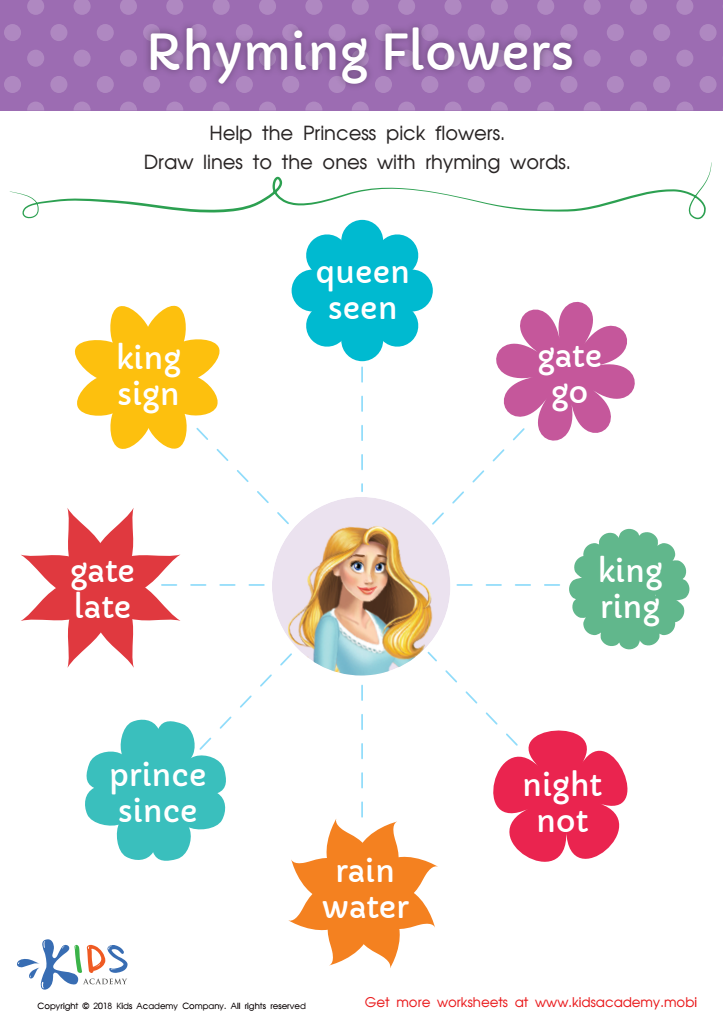

Rhyming Flowers Worksheet


Rhyming Words Rhyming Worksheet
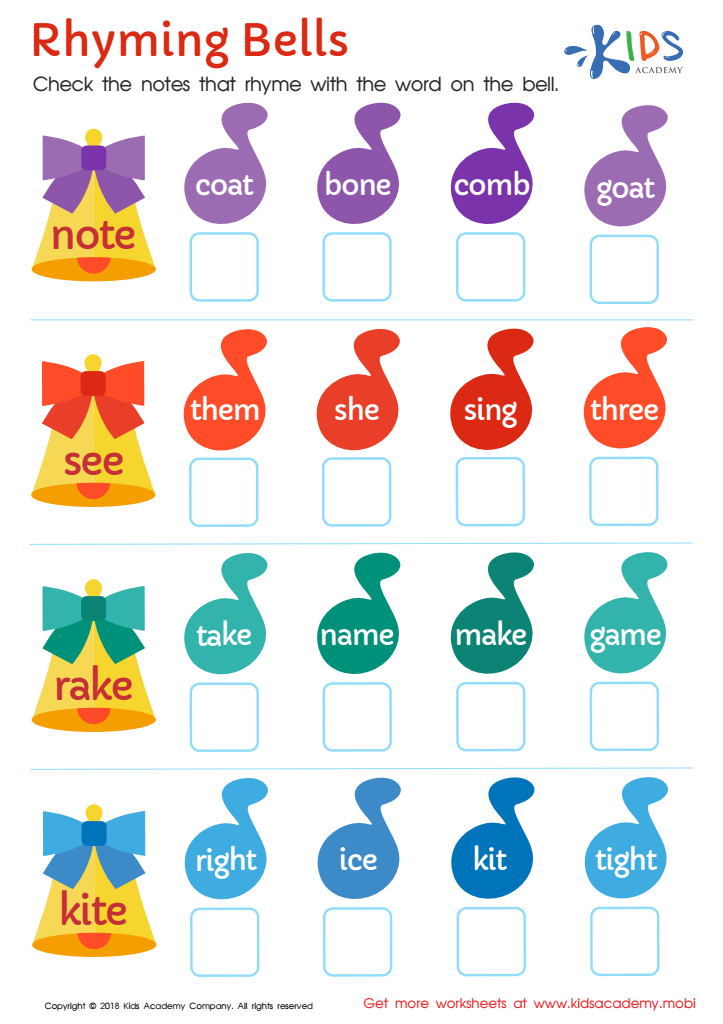

Rhyming Bells Worksheet
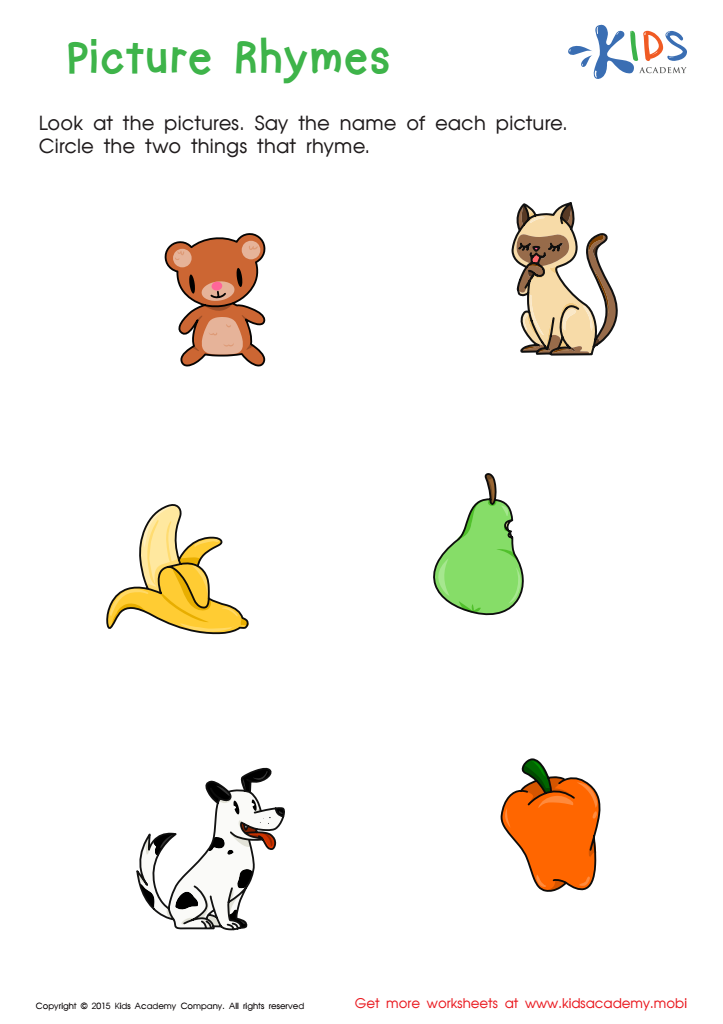

First Words: Picture Rhymes Worksheet
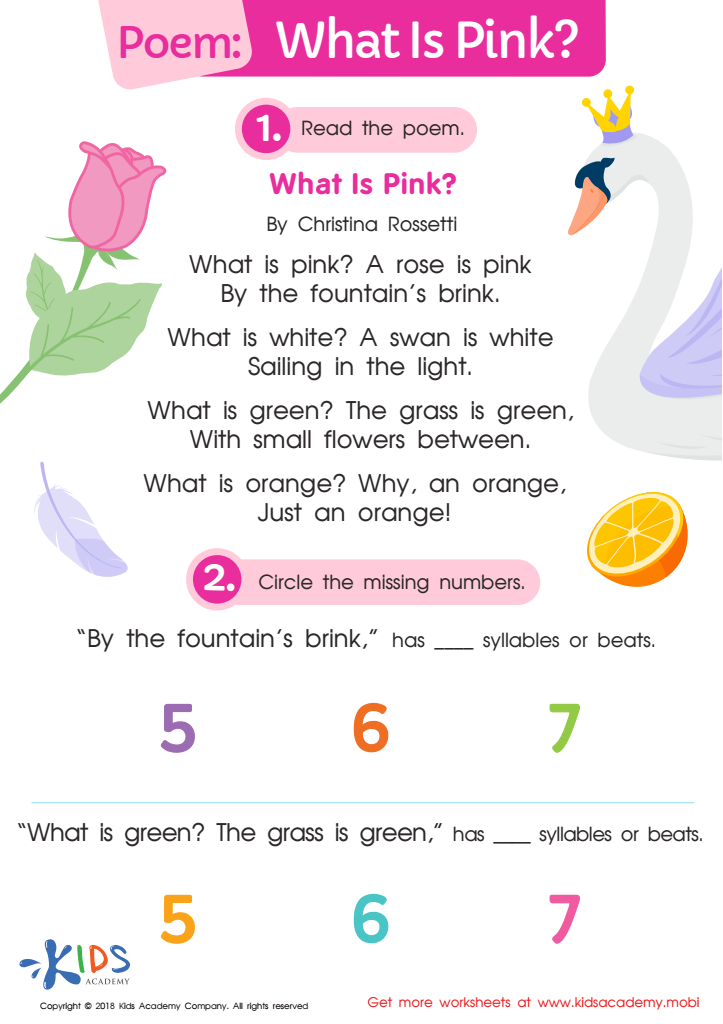

Poem: What Is Pink? Worksheet
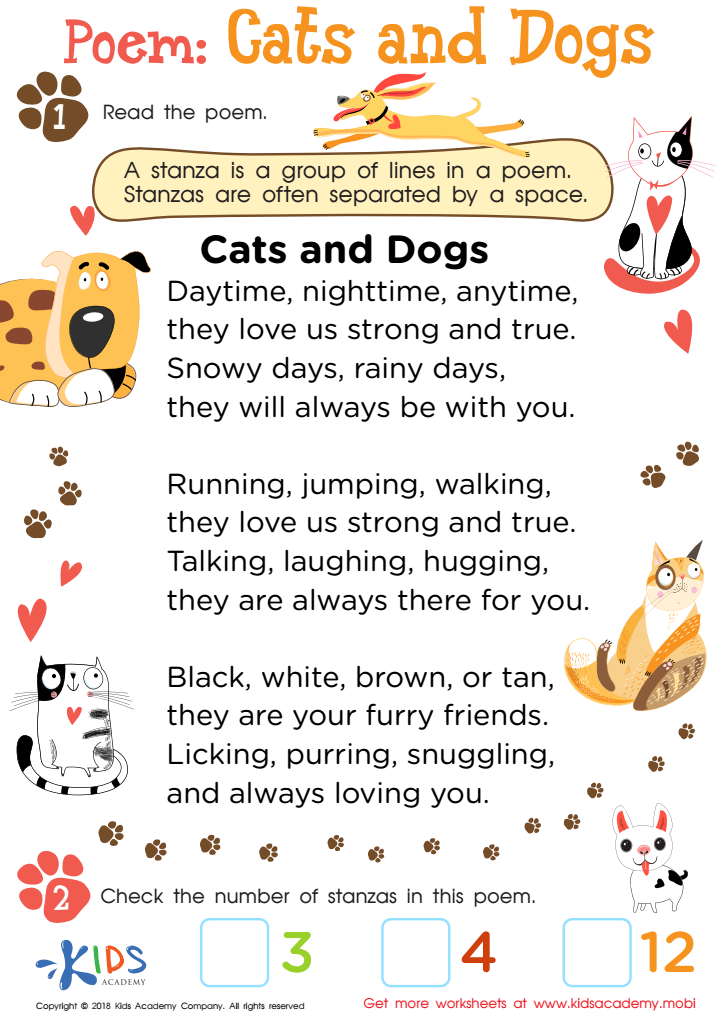

Poem: Cats and Dogs Worksheet
Vocabulary enhancement through normal rhyming is crucial for children aged 3-8 for several reasons. During these formative years, children experience rapid brain development, and language acquisition plays a vital role in their cognitive growth. Engaging with rhymes not only makes learning fun but also reinforces phonemic awareness—understanding the sound structures of words—which is essential for effective reading and writing skills.
Parents and teachers should care about promoting vocabulary enhancement through rhyming because it fosters a love for language. Rhymes and rhythmic patterns help children memorize words more easily, enriching their vocabulary while improving pronunciation and fluency. Moreover, rhyme often introduces new words in context, helping children understand meanings through association and repetition.
Furthermore, engaging with rhymes can significantly enhance listening and comprehension skills, allowing for better communication as children share ideas and stories. This foundational skill set ultimately leads to greater academic success as children progress into higher grades. By prioritizing vocabulary enhancement through rhyming activities, parents and teachers not only prepare children for future literacy but also nurture creativity, critical thinking, and a lifelong appreciation for language. In essence, rhyming is a playful yet powerful tool in early childhood education that equips children with essential skills for the future.

 Assign to My Students
Assign to My Students

